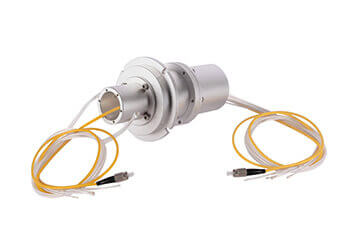Unveiling the factors influencing the cost of electrical slip rings and empowering consumers to make informed decisions.
In the realm of electrical engineering, the quest for seamless power and signal transmission often leads us to the intricate world of electrical slip rings. While these ingenious devices play a vital role in various industries, one question looms large for consumers and businesses alike: What factors determine the prices of electrical slip rings? Today, we embark on a journey to unravel the mysteries and shed light on the elements that influence the cost of these crucial components.
Design Complexity: One of the primary factors that impact the price of electrical slip rings is the complexity of their design. Slip rings can vary greatly in terms of size, configuration, and functionality, catering to a diverse range of applications. As the design becomes more intricate and specialized, involving advanced features like fiber optic transmission, hybrid capabilities, or extreme environment resistance, the manufacturing process becomes more complex. Consequently, the price of the slip ring tends to increase to account for the additional engineering, materials, and manufacturing expertise required.
Power and Signal Capacity: The power and signal capacity of a slip ring significantly influences its price. Slip rings designed to handle higher voltage or current levels typically require specialized materials and construction techniques to ensure reliable performance and durability. Similarly, slip rings with the ability to transmit high-speed data signals or multiplexed signals may involve advanced technologies, such as fiber optic transmission or advanced signal conditioning, leading to an increase in price compared to standard slip rings.
Materials and Components: The choice of materials and components used in the construction of electrical slip rings also affects their pricing. Slip rings may incorporate precious metals, such as gold or platinum, for their superior electrical conductivity and resistance to corrosion. The quality and durability of the brushes, rings, and bearings employed in the slip ring’s construction can also impact its cost. Additionally, specialized coatings or treatments may be applied to enhance performance or protect against environmental factors, contributing to the overall price.
Manufacturing Techniques: The manufacturing techniques employed by slip ring manufacturers play a crucial role in determining their prices. Advanced manufacturing processes, such as precision machining, high-quality assembly, and stringent quality control measures, often come at a higher cost. Manufacturers that invest in state-of-the-art facilities, skilled labor, and cutting-edge technology are likely to produce higher-priced slip rings due to the level of precision, reliability, and performance they offer.
Quantity and Customization: The quantity of slip rings ordered can influence the pricing. Manufacturers may offer volume discounts for larger orders, making it more cost-effective for businesses to purchase in bulk. Additionally, customization requirements can impact the price of slip rings. Tailor-made solutions, designed to meet specific customer needs, may involve additional engineering, prototyping, and testing, leading to higher prices compared to off-the-shelf options.
Market Competition: Market dynamics and competition among slip ring manufacturers also play a role in determining prices. In a competitive market, manufacturers strive to offer competitive pricing to attract customers. This healthy competition can result in more affordable options for consumers. However, it is important to balance price with quality and reliability, as opting for lower-priced slip rings from unknown or unreliable manufacturers may lead to subpar performance and increased maintenance costs in the long run.
When considering the price of electrical slip rings, it is essential to focus on the overall value they provide. While upfront costs are important, it is equally crucial to consider factors such as reliability, performance, durability, and after-sales support offered by the manufacturer.
To make informed decisions, customers are encouraged to engage with reputable slip ring manufacturers, evaluate their track record, and request detailed quotations that outline the specific features, materials, and manufacturing processes involved. By understanding the factors influencing slip ring prices and assessing the trade-offs between cost and performance, consumers can select the most suitable slip rings for their applications while ensuring long-term satisfaction and productivity.
As technology advances and demand grows, it is expected that advancements in manufacturing techniques and economies of scale will contribute to more accessible pricing for electrical slip rings, further fueling innovation and driving progress across industries.
See What We Can Do

